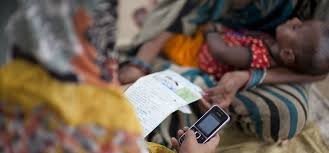Improving Surveillance: The key to defeating Malaria starts with a simple picture
Humanity has made positive progress in the fight against malaria since 2000, despite recent setbacks due to the COVID-19 pandemic. In many settings and geographies it has even achieved success in the form of eradication. There is, however, still much to do to overcome a disease that in 2020 claimed over 600000 lives, the majority of which were children under the age of 5 in Africa.
Our malaria arsenal includes some powerful and useful weapons today, namely: treated bed nets distributed in high risk areas, helping limit mosquito bites and new infections; antimalarial drugs at reasonable prices, which are accessible in many settings where malaria is prevalent; the availability of rapid point of care malaria tests, that can assist in guiding treatment and care plan approaches for patients; and more recently malaria vaccines, which limit severe malaria in children.
It is essential that we optimize these valuable tools if we are to be successful in the mission to eradicate malaria — and leveraging data is key to humanity’s collective success. A detailed understanding of disease patterns, incidence, and geography helps maximize the impact of precious resources and improve planning and decision making for future focus areas and interventions. In a specific geography, knowing when people were tested, what their results were, and how they were managed based on that result is critical information that, if collected in real-time, would enable more targeted and effective disease response and management.
So how could we improve collecting this data? The answer is a remarkably simple and cost-effective one: use smartphone cameras to capture photos of test results and upload them and accompanying information via an app. The digitally captured test result image would be linked to both the individual who performed the test, as well as the geographic location of testing. Further, the app could collect additional symptom and treatment information from the provider as well. All of this collected data would be aggregated and fed into public health reporting systems for seamless surveillance to better inform eradication efforts.
This simple step would take providers the same amount of time or less as current manual documentation of patient health information — which is often incomplete and rarely gets integrated back into reporting systems — while only costing health systems a couple of extra cents. The resulting surveillance data would confirm the location of the test, the test quality, the test result, the provider treatment decision, and aggregated insights into disease patterns, resource allocation, and possible drug resistance considerations.
While the act of taking a photo and inputting information into an app is simple, the challenge lies in generating consistent use of the process by all providers. In the private or public setting, incentives could be awarded to high-performing providers based on testing patterns and correct treatment decisions to motivate use of the system. With use, frontline providers might be encouraged by having more visibility into their own testing data, opening a new line of engagement that could strengthen boots-on-the-ground efforts. Across healthcare settings, quality data that is shared, discussed, and well-utilized will empower users across the system.
In observance of World Malaria Day, let's reflect on all we have accomplished to date, as well as commit ourselves to the work that remains ahead. To do this efficiently, we need objective, high-quality data feeding our surveillance systems. What better way than through connected images of test results? In a resource-constrained world with a growing list of global health and development crises, the value of data and targeted interventions cannot be overstated, and may just be the key to ending malaria.

